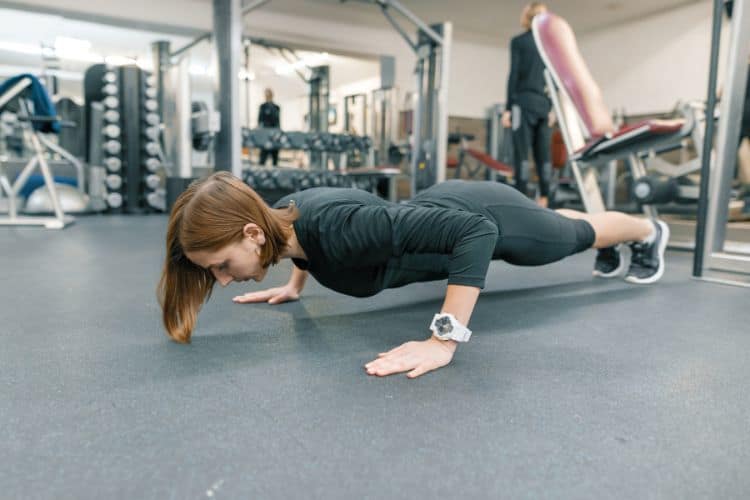Sign up for workout ideas, training advice, reviews of the latest gear and more.






Fitness and workouts have transcended trends. They have become integral aspects of our lifestyles. As women, our bodies experience various physiological and hormonal changes that require tailored approaches, especially in terms of recovery post-exercise. A proper workout recovery regimen ensures that our bodies rebuild, replenish, and rejuvenate, allowing us to reap maximum benefits from our fitness routines.
Workout recovery is the process during which our body repairs and recovers from the stress and strain of exercising. It’s when muscles heal, energy stores replenish, and the body revitalizes itself. This recovery is crucial as it not only aids muscle growth and strength but also ensures that we don’t suffer from fatigue, injuries, or burnout.
Women’s bodies are different from men’s, both anatomically and hormonally. Factors like menstrual cycles, pregnancy, menopause, and hormonal fluctuations can impact our recovery rates and needs. Understanding these nuances can significantly optimize the recovery process.
Adequate Sleep: Sleep is the golden thread that ties health and our well-being together. Hormones like growth hormone, essential for muscle repair, are released during deep sleep. Women, especially those in their reproductive years, often have sleep disturbances due to hormonal changes. Ensure 7-9 hours of quality sleep for optimal recovery.
Our bodies require the right mix of carbohydrates, proteins, and fats to recover. Consuming a post-workout meal or shake within 30 minutes to 2 hours of your workout can speed up muscle recovery. Consider incorporating foods rich in omega-3s, antioxidants, and protein in your diet.
Hydration: Women are susceptible to hormonal shifts that can lead to water retention or dehydration, especially during certain phases of the menstrual cycle. Drinking adequate water post-workout ensures optimal cellular function for muscle repairs.
Stretching & Mobility: Gentle stretching post-exercise can alleviate muscle tightness, boost circulation, and aid in lactic acid removal. Yoga and pilates are excellent for enhancing flexibility and mobility.
Compression garments can enhance blood circulation, thus speeding up the removal of lactic acid and reducing muscle soreness. These can be especially beneficial for women prone to varicose veins or circulation issues.
Massage and Foam Rolling: These techniques help in breaking up knots in muscles and improve blood flow. They are particularly beneficial for women as they can alleviate cramps and muscle tightness associated with monthly cycles.
Epsom Salt Baths: The magnesium in Epsom salts is believed to help relax muscles and reduce inflammation. A warm Epsom salt bath can be a relaxing way to aid recovery, especially during menstrual cramps.
Instead of complete rest, consider low-intensity activities like walking or swimming. Active recovery can increase blood flow, reduce muscle stiffness, and expedite the healing process.
Mental Recovery: Mind-body techniques like meditation, deep breathing, and visualization can significantly aid recovery. Women, often juggling multiple roles, can benefit from these techniques to manage stress and enhance mental well-being.
Listen to Your Body: Every woman’s body is unique. Some days you might recover faster, while on others, you may feel sluggish. It’s crucial to listen to your body’s cues. During certain phases of your menstrual cycle, or due to hormonal fluctuations, you might need extended recovery. Honor that.
Understanding our hormonal cycle can be a game-changer. For instance, during the follicular phase of your menstrual cycle (days 1-14), estrogen levels rise, and recovery might be quicker. In contrast, during the luteal phase (days 15-28), progesterone levels are high, which can lead to water retention, bloating, and slower recovery.
In the realm of fitness, we often undervalue the importance of rest days. For women, especially, these breaks are not just moments of physical relaxation but also an opportunity for mental rejuvenation.
Scheduled Rest Days: Incorporate a scheduled rest day at least once a week. This pause is essential for muscle repair, reducing the risk of overtraining, and addressing any minor aches before they turn into significant injuries.
Sync with Your Cycle: Women can consider syncing their rest days with their menstrual cycles. For many, the first day of menstruation can be challenging due to cramps or fatigue. It might be beneficial to schedule a rest day during this time, focusing on relaxation and gentle stretching.
Cold Therapy: Cold showers or ice baths post-workout can help reduce muscle inflammation and soreness. While it might be challenging initially, many women find this method invigorating and effective in muscle recovery.
Heat Therapy: Saunas or steam rooms can aid in relaxing tight muscles and promoting blood flow. Additionally, they can provide relief from menstrual cramps and act as a stress-relieving ritual.
Electrolyte Balance: As women, hormonal fluctuations can sometimes lead to electrolyte imbalances, causing muscle cramps or spasms. Ensure you replenish electrolytes post-workout, especially after intensive sweat sessions, through drinks or foods rich in potassium, sodium, and magnesium.
Alternative Therapies: Acupuncture and cupping have been recognized for their potential benefits in muscle recovery and pain relief. While they might not be conventional, many women have reported significant improvements after these sessions.
Mental Health and Recovery: Emotional and psychological well-being plays a crucial role in physical recovery. Engage in activities that soothe your mind – be it reading, journaling, or simply spending some quiet time in nature. Women, often multitasking and shouldering various responsibilities, can experience stress that impedes recovery. Managing mental well-being is as important as physical rest.
Protein Powders: A quick protein shake post-workout can be an excellent way to feed the muscles the necessary amino acids for repair. There are various options tailored for women, considering specific nutritional needs.
BCAAs: Branched-Chain Amino Acids can aid in muscle repair and reduce soreness. They can be taken during or post-workout.
Vitamins and Minerals: Ensure you’re getting essential vitamins and minerals, especially Vitamin D, Calcium, and Iron. Women are more prone to deficiencies in these areas, which can hamper recovery and overall health.
Omega-3 Fatty Acids: Known for their anti-inflammatory properties, these can assist in reducing muscle soreness post-workout.
It’s imperative to debunk the myth that soreness is the only indicator of an effective workout. While occasional muscle soreness is a natural outcome of pushing our boundaries, persistent pain or discomfort is not. Women, especially, should be vigilant about differentiating between the two. An effective recovery routine ensures that you bounce back stronger, without lingering pain.
What works wonders for one woman might not be as effective for another. Our genetic makeup, lifestyle, diet, and overall health play roles in how we recover. It’s essential to understand that recovery is not a one-size-fits-all formula. Experiment with different strategies, be attentive to your body’s signals, and cultivate a recovery routine tailored to your unique needs.
Adding another layer to our fitness journey, workout recovery for women is multifaceted and profoundly personal. Our bodies are incredible machines capable of immense adaptability and resilience. By investing time and effort into an effective recovery routine, we pave the way for sustainable fitness, reduced risk of injury, and an enhanced sense of well-being. Every drop of sweat, every challenging rep, and every restful moment of recovery are steps towards a stronger, healthier version of ourselves. Celebrate each stage with equal fervor.
Stay up to date on the latest women’s health, fitness and lifestyle trends and tips.